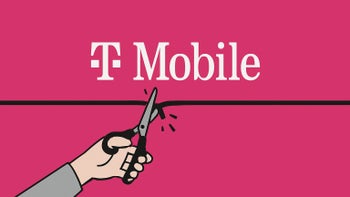There may soon be a third major player in the OLED screen business

Sharp announced recently that it started mass production of OLED displays for smartphones. For the time being the production capacity will be only for its own Aquos smartphones. While initial numbers are unlikely to make a big impact on the market, it's interesting to see in which direction Sharp will go. But what's so special about the OLED market, you might ask?
While the OLED technology has been around for a while now both in TVs and in smartphones, such panels are still a premium feature for most brands. There are many technical differences between LCD and OLED, but simply put, regular LED LCD panels have pixels that emit color, but no light, so they require a backlight to shine white light through the pixels to produce a visible image. OLED displays, on the other hand, have pixels that can emit light in each of the three main colors – red, green and blue. This removes the need for a backlight, which allows OLED panels to be thinner, and most importantly, produce pictures with higher contrast ratios and more vivid colors. You've probably heard about how black the black is on OLED displays compared to LCD.
Currently, in the mobile display market, Samsung holds 90.1% of the OLED market, with LG far behind at 7.7%. This pretty much means Samsung has a monopoly, which allows them to keep prices higher and still be profitable despite the production hardships of OLED.
Last year's iPhone X was Apple's first smartphone with an OLED screen and famously the first to cost $1000. This, of course, is no coincidence. The OLED display was the single most expensive part of the phone. And because iPhones are some of the best-selling smartphones, Apple has no choice but to use OLED displays made by Samsung for most of its iPhones. As you can imagine, Samsung being Apple's biggest competitor in the smartphone market, that's not exactly a sweet deal. The Californian company is rightfully looking for other suppliers, but so far only LG is contributing with a few million panels, far from enough for Apple to shake off its dependence on Samsung.
It will take at least half a year of Sharp OLED production to see where they stand in the field. If the company is really able to mass produce the tricky displays with good quality, Sharp might be the second OLED manufacturer to receive a financial boost from Apple, after it invested $2.67 billion in LG to help it ramp up production.
If Samsung's competition in the OLED market gets stronger, we might be able to get OLED displays without having to pay premium prices or having to choose from Samsung's lineup of smartphones.
source: DigiTimes
The problem is, OLED displays are really hard to manufacture, especially in mass production numbers. The displays are prone to defects, which leaves companies with fewer panels they can sell, so the price for the good ones must cover the cost of the unusable ones on top of their own.
Currently, in the mobile display market, Samsung holds 90.1% of the OLED market, with LG far behind at 7.7%. This pretty much means Samsung has a monopoly, which allows them to keep prices higher and still be profitable despite the production hardships of OLED.
Last year's iPhone X was Apple's first smartphone with an OLED screen and famously the first to cost $1000. This, of course, is no coincidence. The OLED display was the single most expensive part of the phone. And because iPhones are some of the best-selling smartphones, Apple has no choice but to use OLED displays made by Samsung for most of its iPhones. As you can imagine, Samsung being Apple's biggest competitor in the smartphone market, that's not exactly a sweet deal. The Californian company is rightfully looking for other suppliers, but so far only LG is contributing with a few million panels, far from enough for Apple to shake off its dependence on Samsung.
If Samsung's competition in the OLED market gets stronger, we might be able to get OLED displays without having to pay premium prices or having to choose from Samsung's lineup of smartphones.
source: DigiTimes












Things that are NOT allowed: